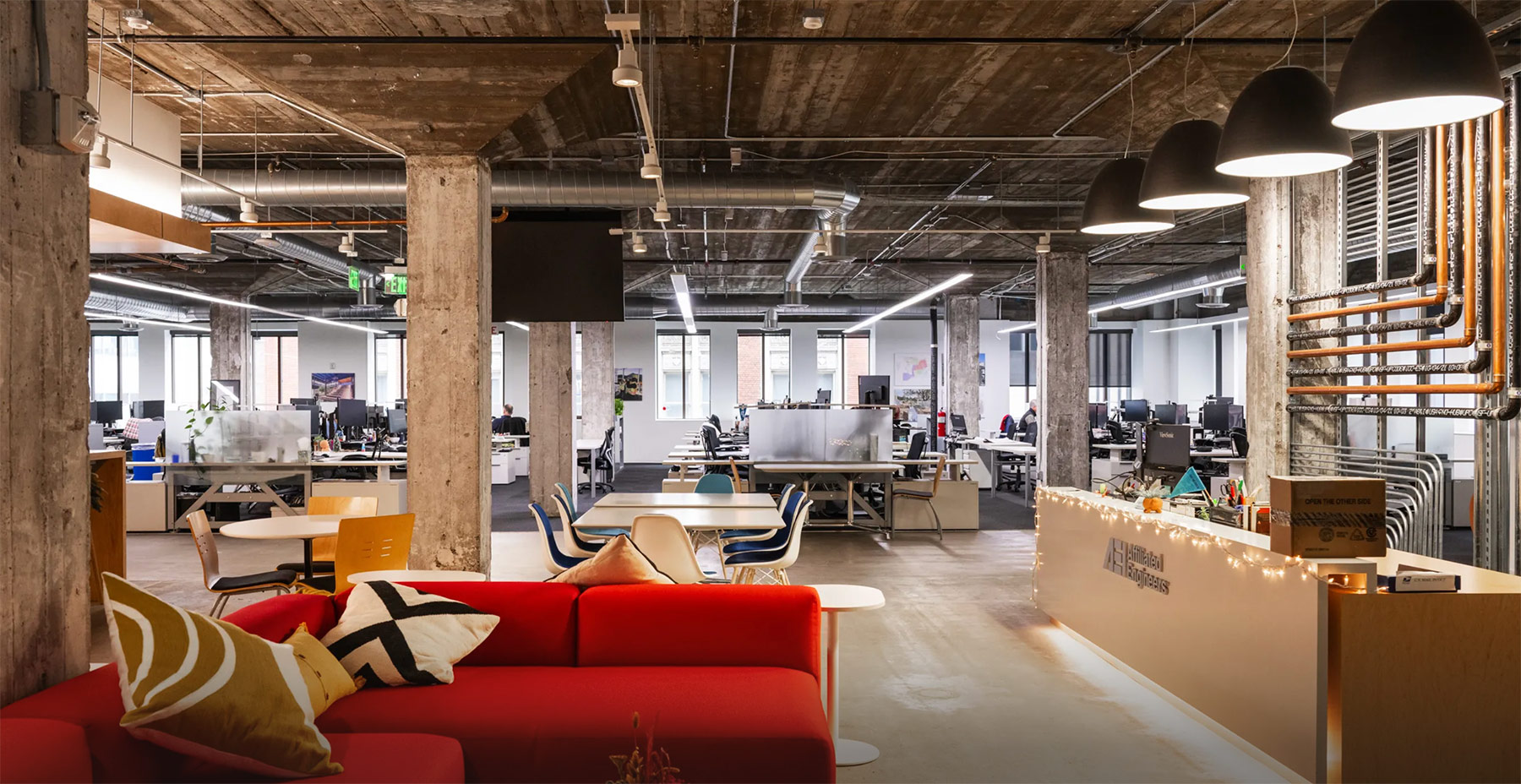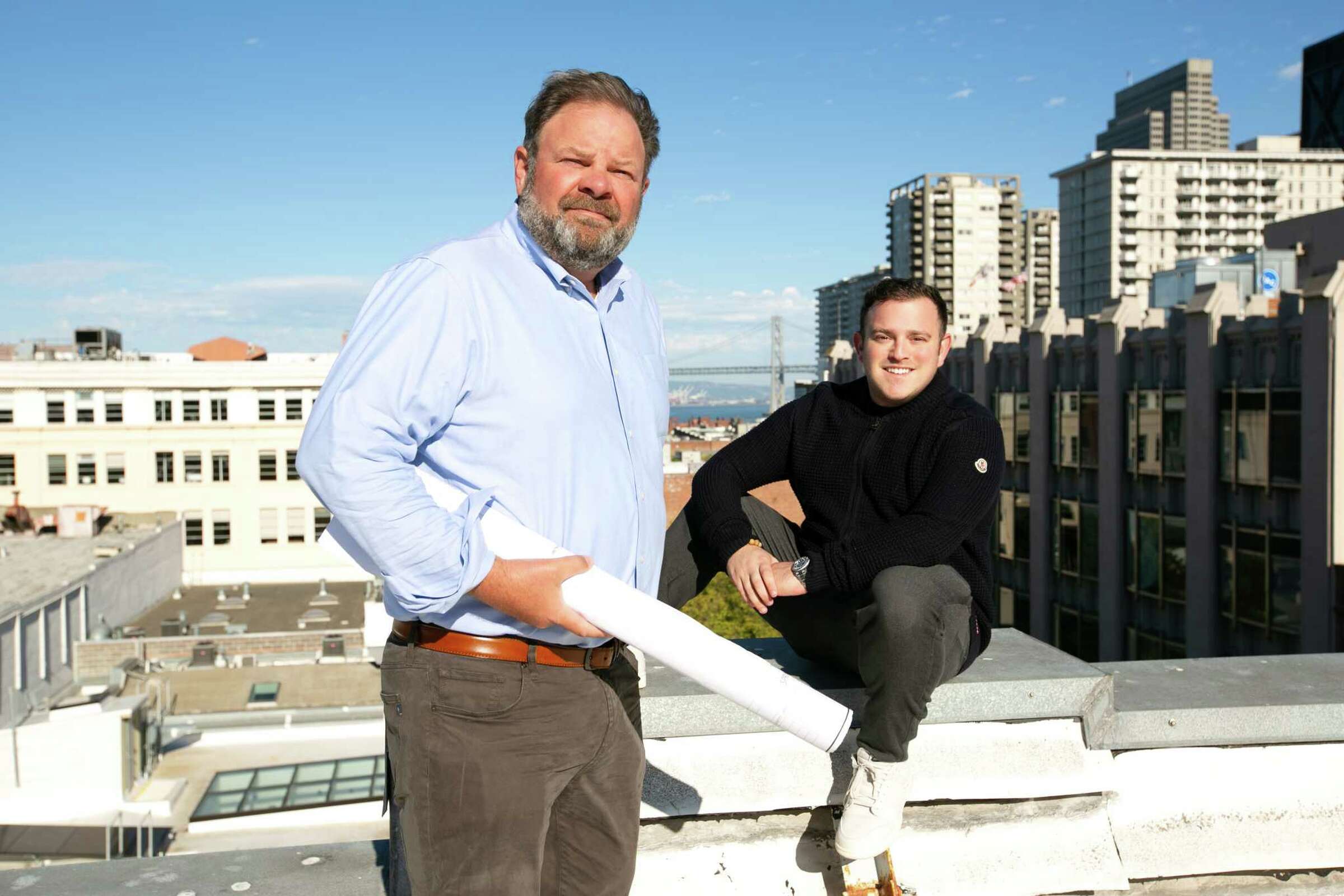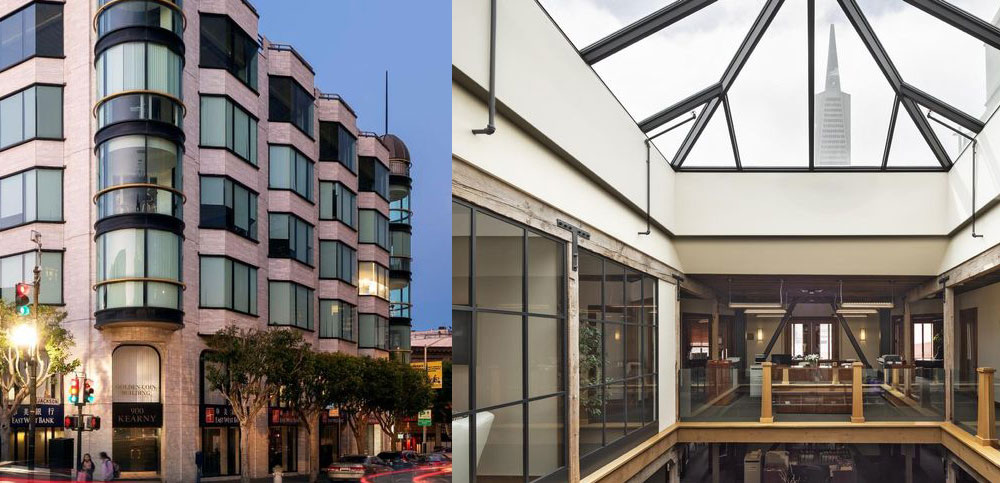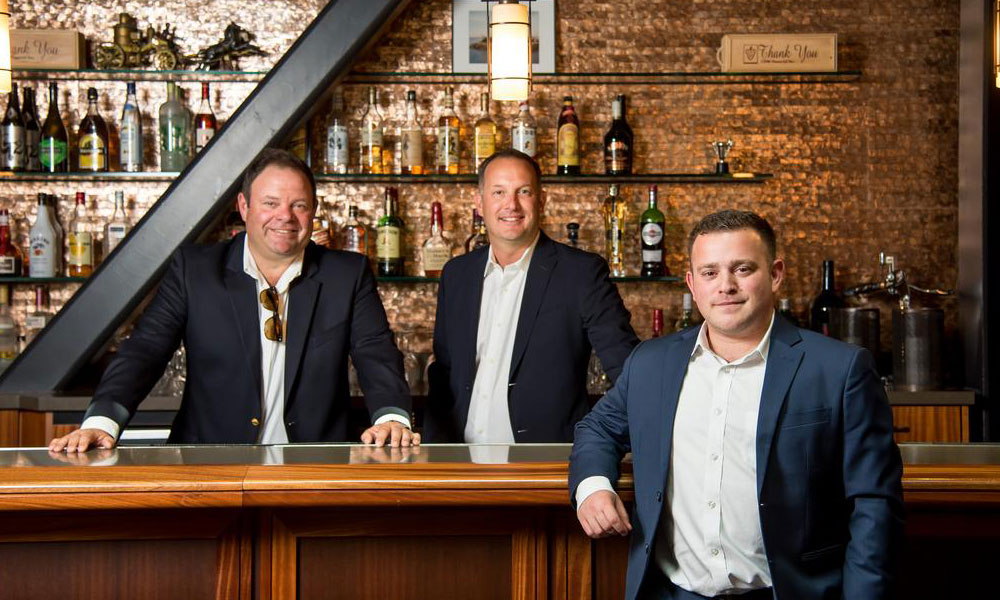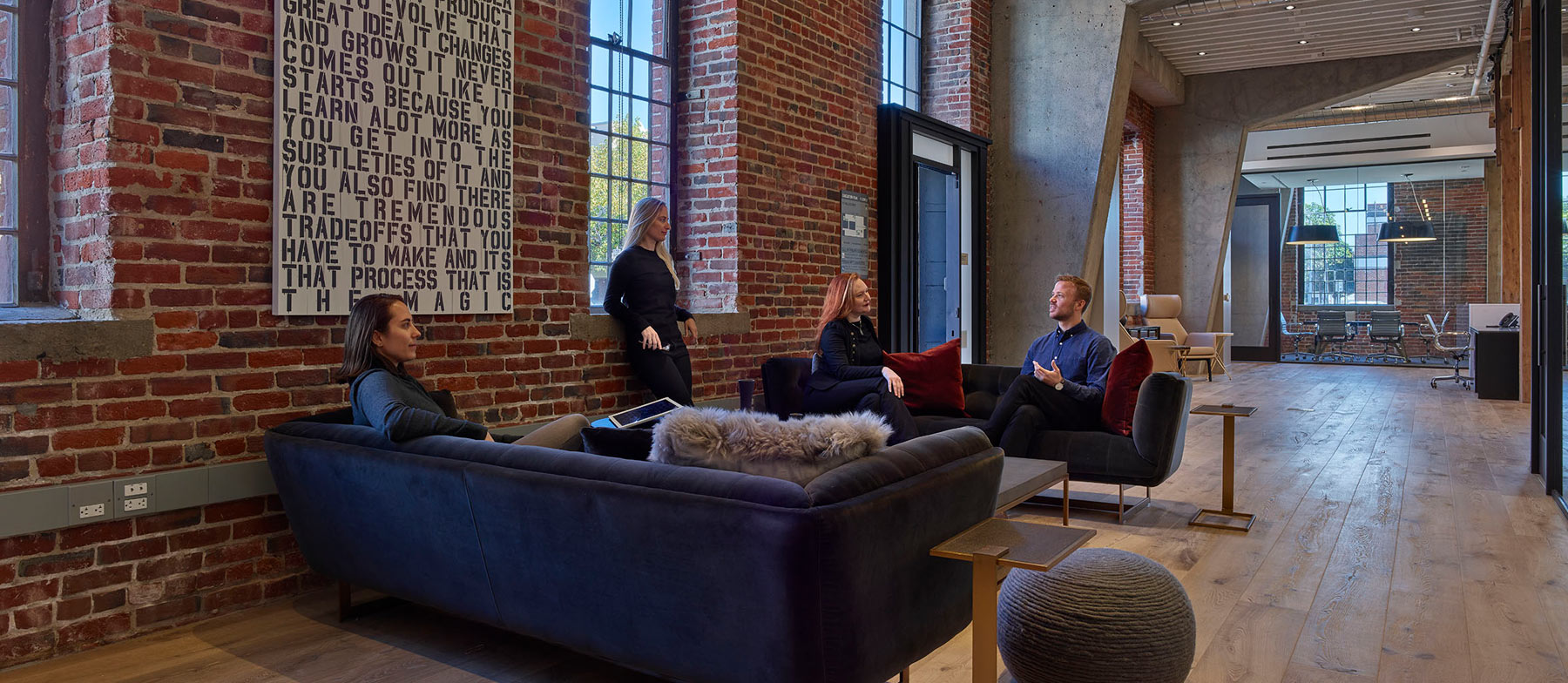Brick & Timber Collective’s Glenn Gilmore, left, and Jesse Feldman at one of the San Francisco office buildings that they own. They expect to buy more despite the city’s record vacancy rates.
Between another round of discounted sales, an uptick in office leasing, and political change, 2024 has set the table for a brighter future.
By Kevin V. Nguyen | The San Francisco Standard
He only just got the place, so you’ll have to forgive Glenn Gilmore for fumbling through his ring of keys.
In the week when most office workers have decamped for the holiday break, the developer is charging ahead with renovations to 500 Washington St., a 100,000-square-foot office building in Jackson Square that was constructed in 1982.
His first order of business: replacing all physical door locks with digital ones that can be unlocked via phone. “I hate keys,” Gilmore said during a recent walk-through of the property. “Anything manual just feels super old nowadays.
“Plus, you don’t need a permit to start working on this kind of stuff,” he added.
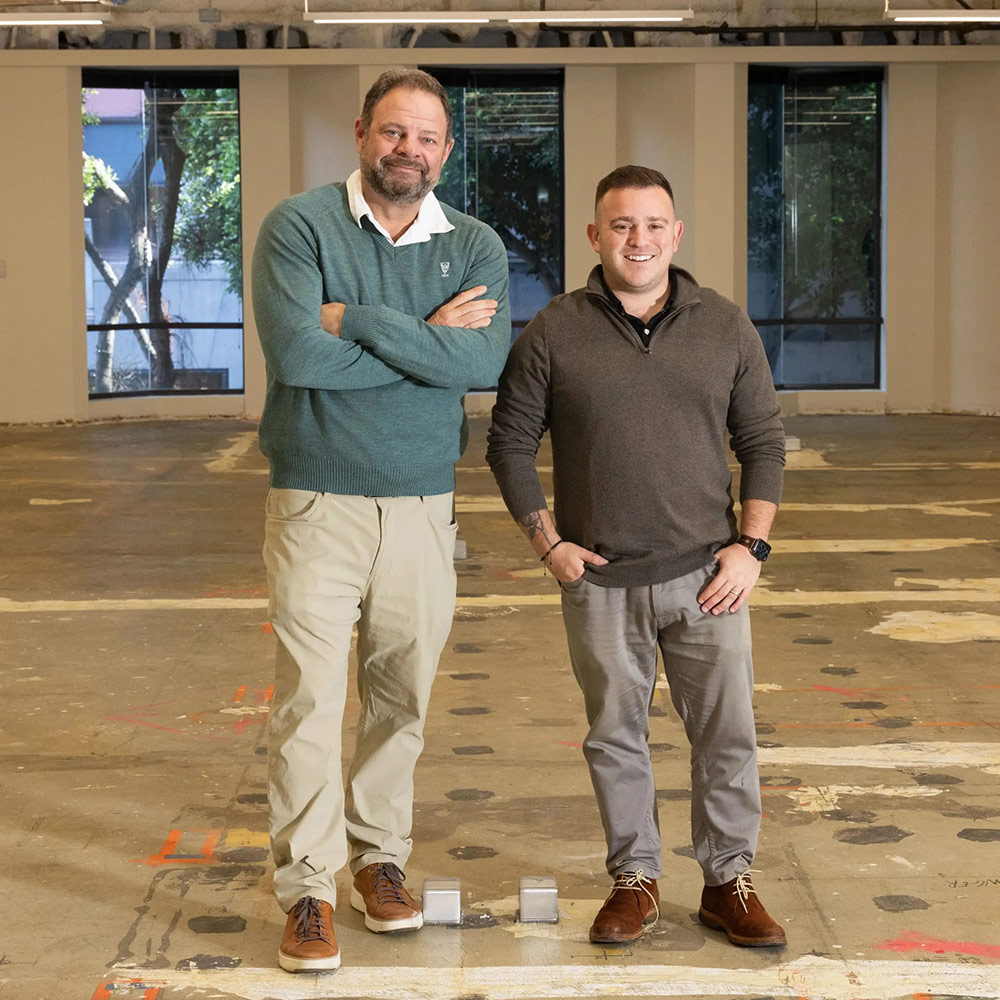
Glenn Gilmore, left, and Jesse Feldman of Brick & Timber Collective this month acquired an office building with an institutional investor — a rarity since the pandemic. | Source: Benjamin Fanjoy for The Standard
His firm, Brick & Timber Collective, closed on the eight-story brick structure this month and is planning a complete remodel of the building kitty-corner to the Transamerica Pyramid.
The ground floor will become a restaurant with outdoor seating reminiscent of Cotogna, a posh establishment that has become a neighborhood destination for business lunches and first dates alike.
Upstairs, interior walls will be knocked down to expose a 360-degree view of the city that was obscured by cubicles and individual offices. A rooftop bar is also in the works.
This level of investment is possible because Brick & Timber Collective was able to purchase the building for just $32.6 million, a hair over the $30 million the Public Policy Institute of California paid for it more than two decades ago, according to public records.
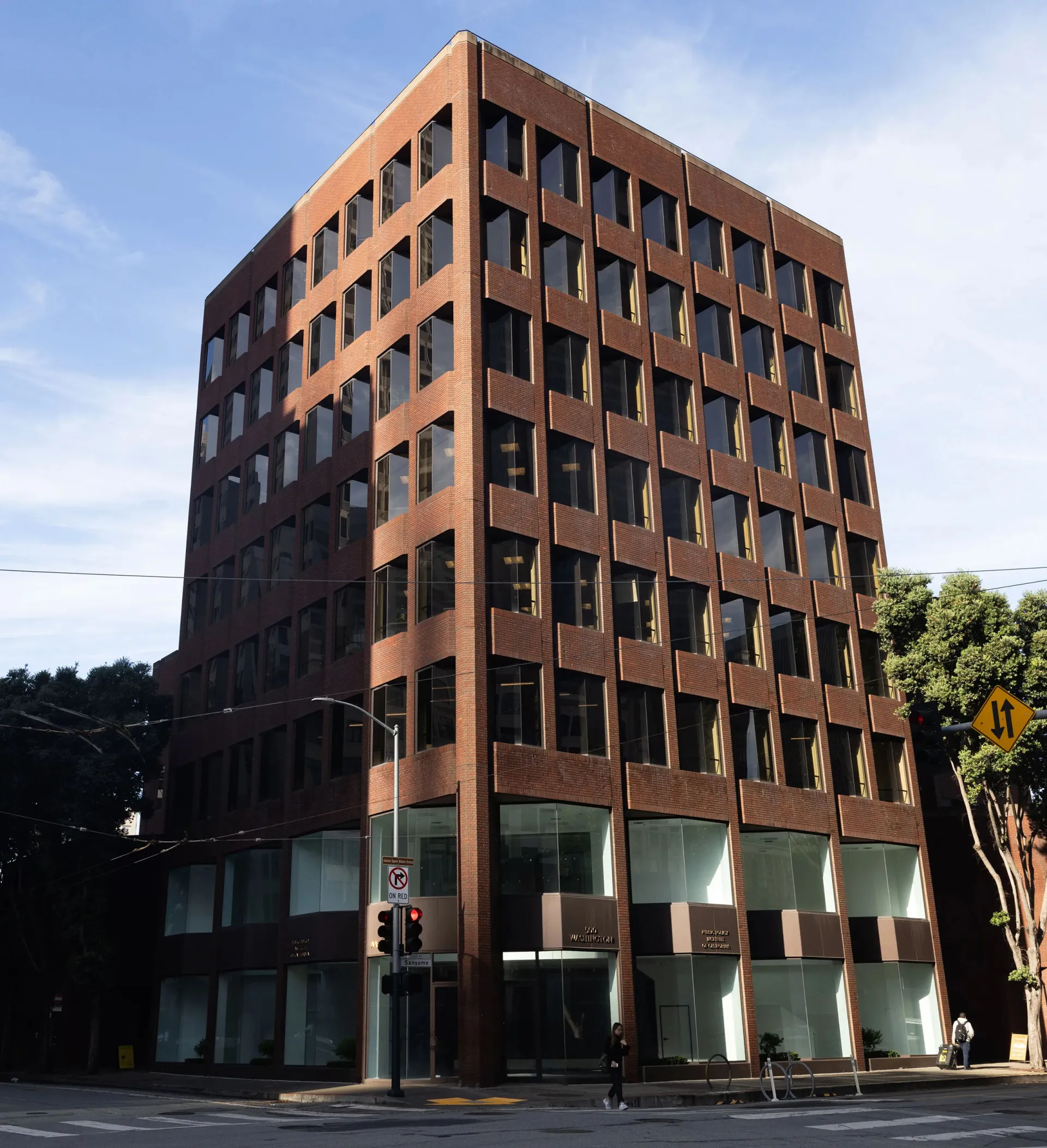
Brick & Timber Collective will remodel this 1980s building and launch it as "Park Washington." | Source: Benjamin Fanjoy for The Standard
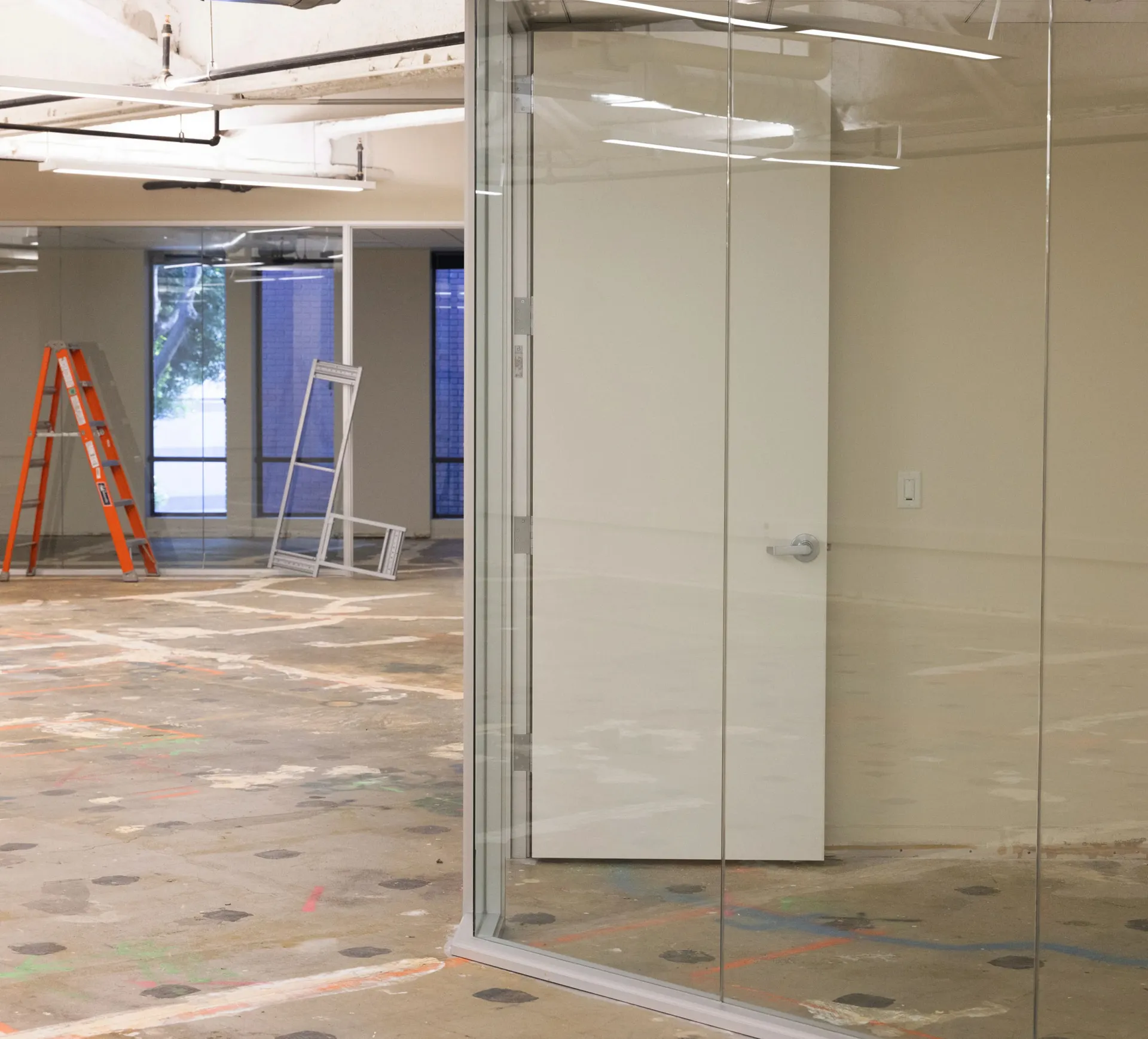
The floor plans will be opened up to expose panoramic views. | Source: Benjamin Fanjoy for The Standard
Not only was the value of the sale on par with San Francisco’s distressed commercial real estate market but 500 Washington is notable in that it shows how more institutional investors are emerging from the sideline since the pandemic.
Gilmore confirmed that Barings, a subsidiary of the Massachusetts Mutual Life Insurance Company, signed onto the project as a limited partner, helping pay all cash upfront and will add more layers of debt financing to the renovation after the new year. Remarkably, he said, the deal — his firm’s largest to date — took only four months to complete.
Recent office sales have largely been confined to a handful of local private investors who were betting early on the city’s recovery.
Now, nearly five years into San Francisco’s new normal, that belief is again spreading to outside capital, which fueled the city’s previous real estate boom.
What signs are they seeing? For one, more office workers are returning. According to real estate firm CBRE, San Francisco’s office leasing activity this year reached its highest point since 2019.
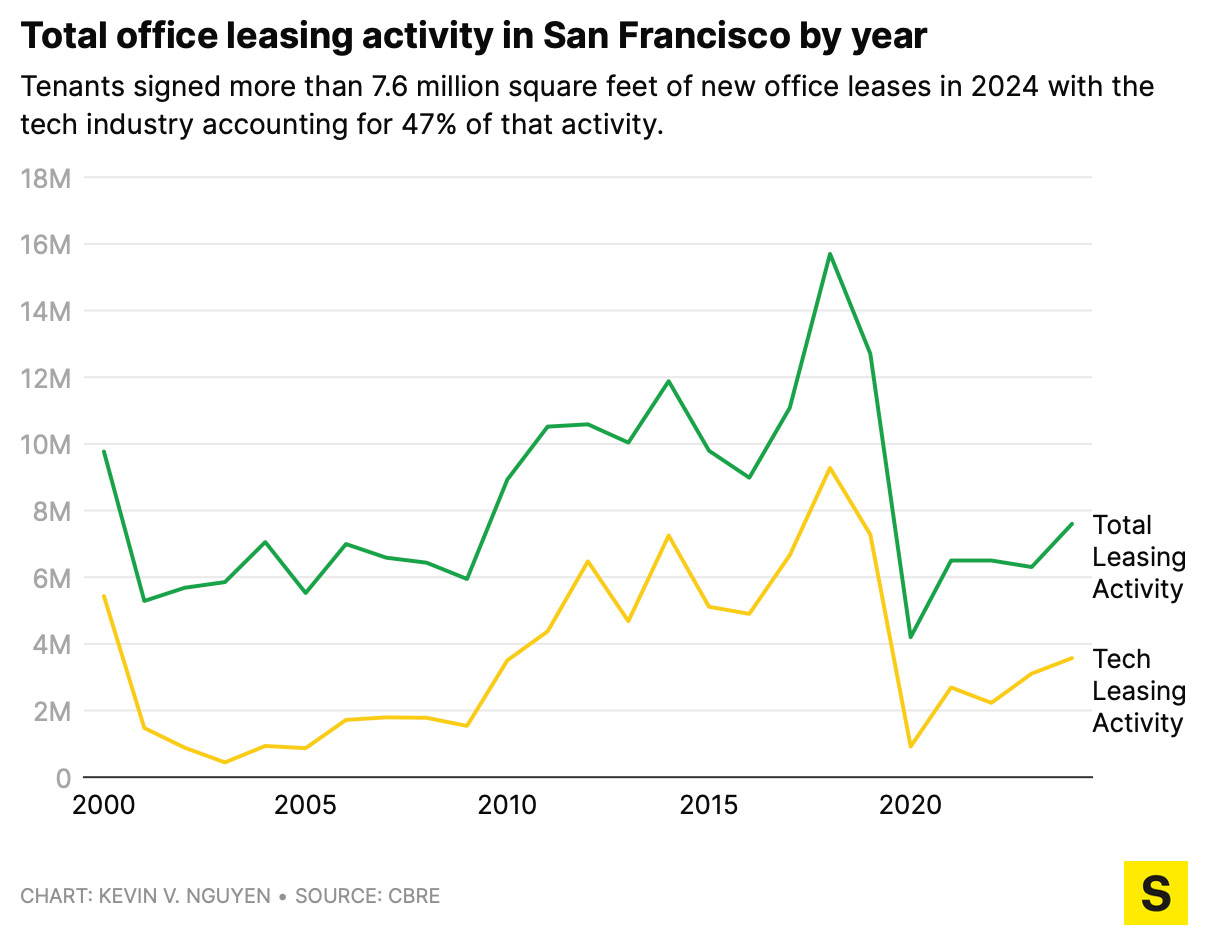
As a result, the city’s office vacancy rate declined for the first time in 19 quarters, from 36.9% to 36.7%.
“The expectation is that tenant demand will once again increase in 2025 as growth plans gain momentum and additional office space is needed,” said Colin Yasukochi, executive director of CBRE’s Tech Insights Center.
Perception matters
When times were good, the business model in the city’s commercial real estate sector was predicated on increased office demand, which in turn resulted in higher rents and property values.
But the massive retreat of Big Tech, combined with the struggle to deal with quality-of-life issues such as homelessness and public safety, essentially made San Francisco a no-go zone for institutional investors. Adding insult to injury, billions of dollars of prepandemic loans are coming due.
Just last week, the Manhattan-based Teachers Insurance and Annuity Association of America had to liquidate its majority position in nearly 1 million square feet of San Francisco office space, across two buildings it acquired in 2014 for more than $700 million.
Heading into the new year, the real estate industry has momentum, buoyed by optimism after the November election brought in wholesale political change, says Cyrus Sanandaji, managing principal of Presidio Bay Ventures, another local developer that was active in scooping up distressed office buildings in the early days of the downturn.
“Two years ago, conversations with [institutional investors] were nearly nonexistent since we had a perception problem, and a lot of groups were still taking hits on their existing investments,” Sanandaji said. “Now, you’re going to see a much faster run-up in bidding, because at some point, these funds will have to establish conviction and start owning some real estate, even if they’re a little late in timing the bottom of the market perfectly.”
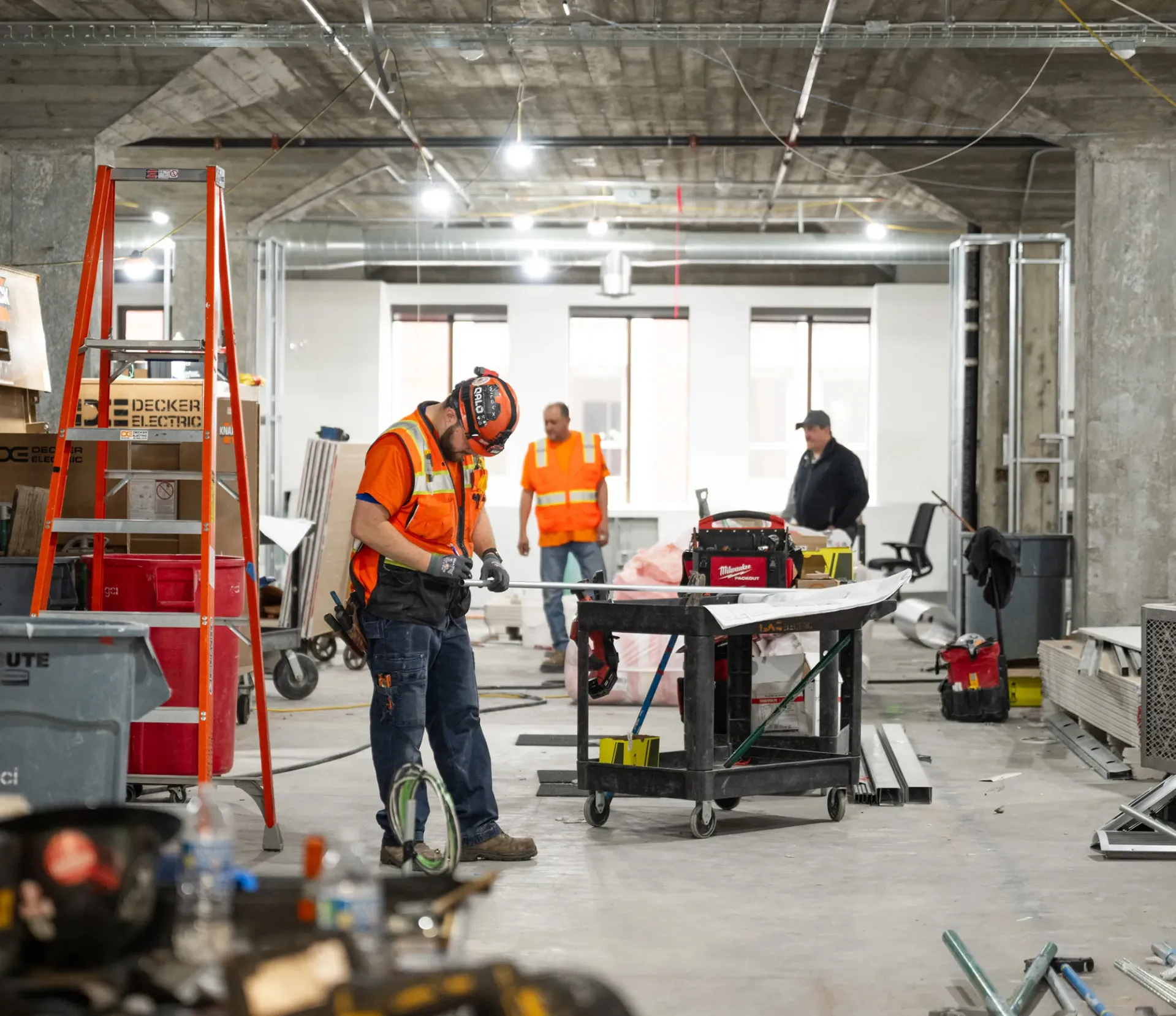
Local firm Decker Electric Co. leased office space at the recently traded 300 California Street. The company is chipping in on a renovation. | Source: Adahlia Cole for The Standard
While the office market has been contracting, artificial intelligence companies have been steadily leasing more space in San Francisco, the creative and financial epicenter of the nascent technology.
“I think everyone is underestimating the scale that is going to be required to build these companies,” Sanandaji said. “Even if we only have a 10% success rate, you don’t need that many unicorns to occupy all the available space.”
Local businessman Greg Flynn, whose holdings include chain restaurants, luxury resorts, and office buildings, agreed.
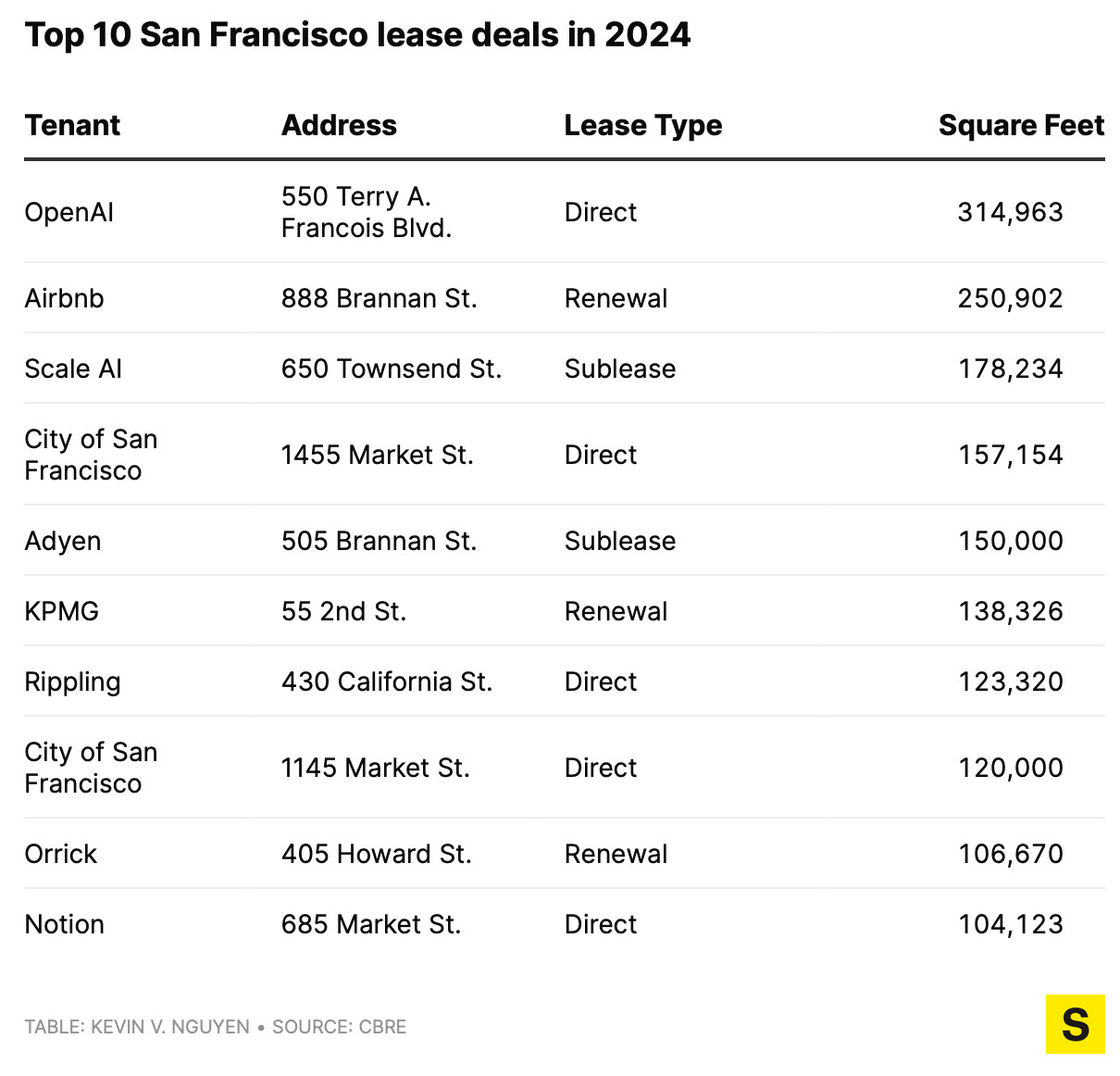
“Sea changes tend to happen quickly,” he said. “And just as it was for the internet and social media, San Francisco is on the forefront of the next driving force.
“I think this was the year the city gained the resolution to turn itself around,” he added. “Now we need our biggest employers to start bringing their employees back into the office.”
Build it and they will come
In just this year, brothers Chris and Jason Freise of Redco Development have closed on three purchases in downtown San Francisco. They started in February by acquiring Harrington’s Bar and Grill on Front Street after the beloved Irish pub fell on hard times.
A few months later, they partnered with local firm GCI General Contractors to snap up a 120,000-square-foot office building at 300 California St., on the city’s famous skyscraper corridor, for $28.5 million, nearly half off the price paid in 2014 by the New York-based seller.

The renovated suites at Redco's newly acquired 400 Montgomery St. building are geared toward emerging tech firms. | Source: Adahlia Cole for The Standard
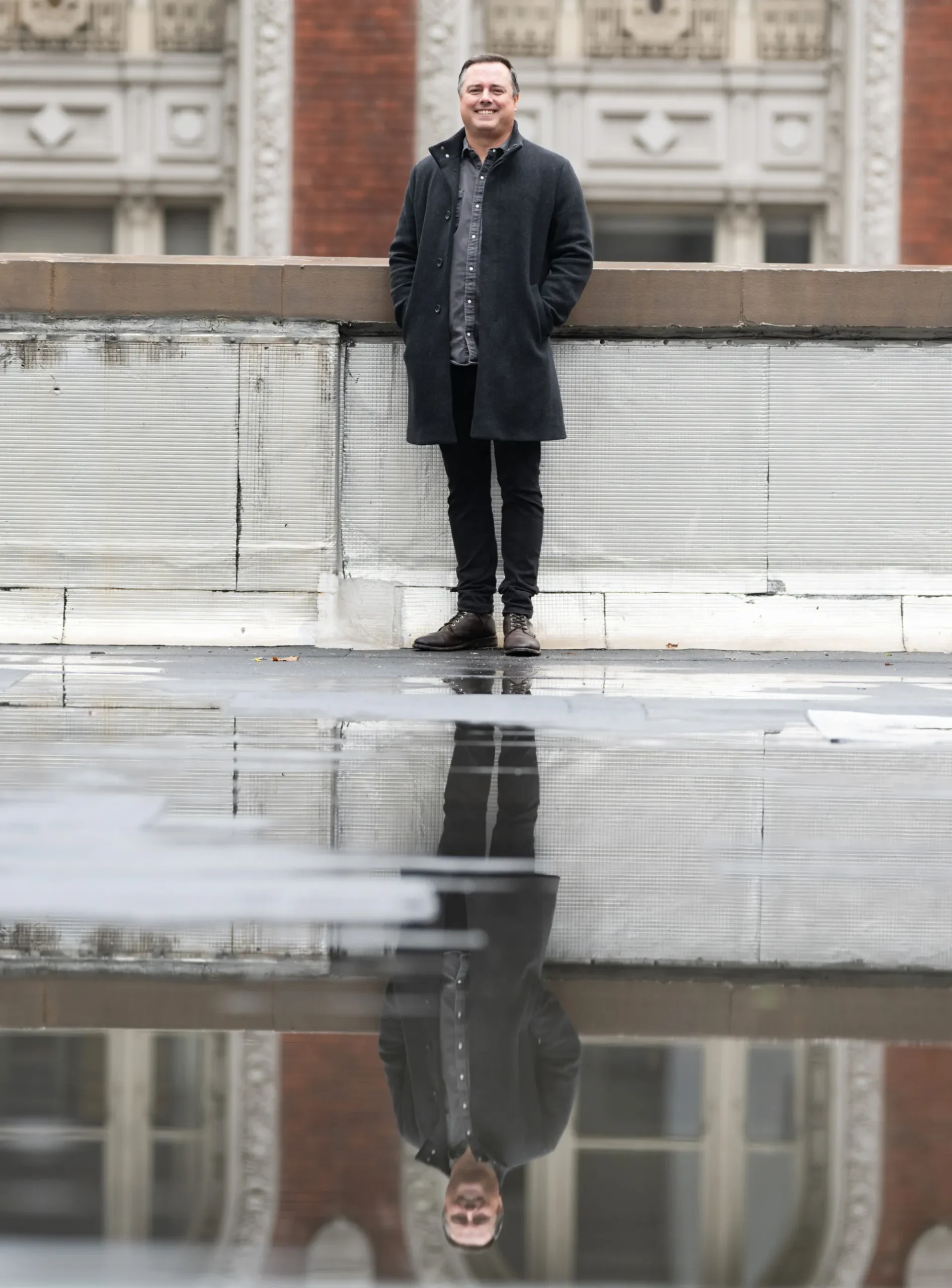
Chris Freise, managing partner of Redco Development, made his name investing in downtown San Jose before acquiring projects in San Francisco during this downturn. | Source: Adahlia Cole for The Standard
And a week before Thanksgiving, they got the keys to another building just a block away, at 400 Montgomery St., for roughly $25 million. Their two deals were closed with debt financing, which is another indicator the markets are warming up to San Francisco again.
Like their contemporaries, the Freise brothers are using the cost savings from those deals to renovate the properties in order to attract new tenants.
The lobby at 400 Montgomery, for example, will be reoriented toward the busier, more visible California Street side of the building, while floors five through nine are being converted into turnkey office suites for tech tenants, ranging from 3,000 to 7,200 square feet, which fit nicely into San Francisco’s most in-demand office market.
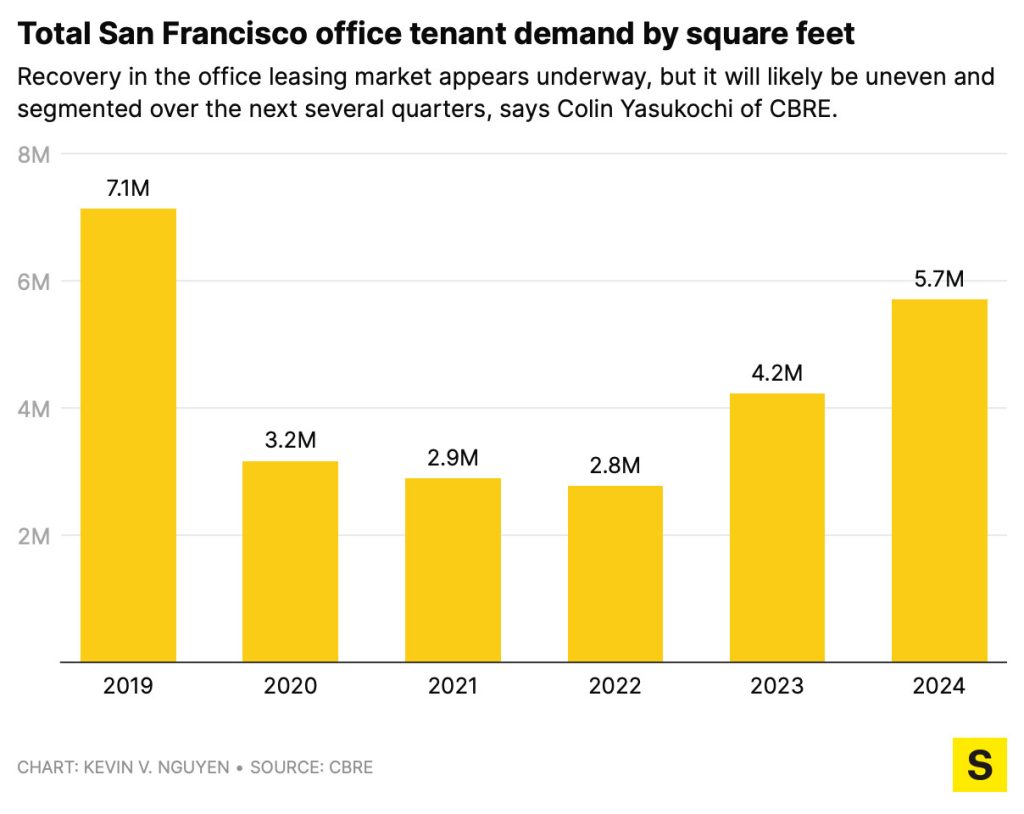
“Downtown urban cores are struggling, but one thing that hasn’t changed is that if you build a good product, people will seek it out,” said Chris Freise.
On top of market-low rents, Redco is offering tenants the opportunity to buy into building ownership. The scheme, which Freise said is meant to foster “community,” would give participants a cut of the building’s income each year.
This strategy is paying off. At 400 Montgomery, Redco got four tenants to agree to new leases while the building was in escrow, while 300 California has only two floors out of eight still available.
“Leasing is as much about momentum as it is pricing,” Freise said, adding that initiatives such as the city’s first designated entertainment zone, in front of Harrington’s, will accelerate the office resurgence.
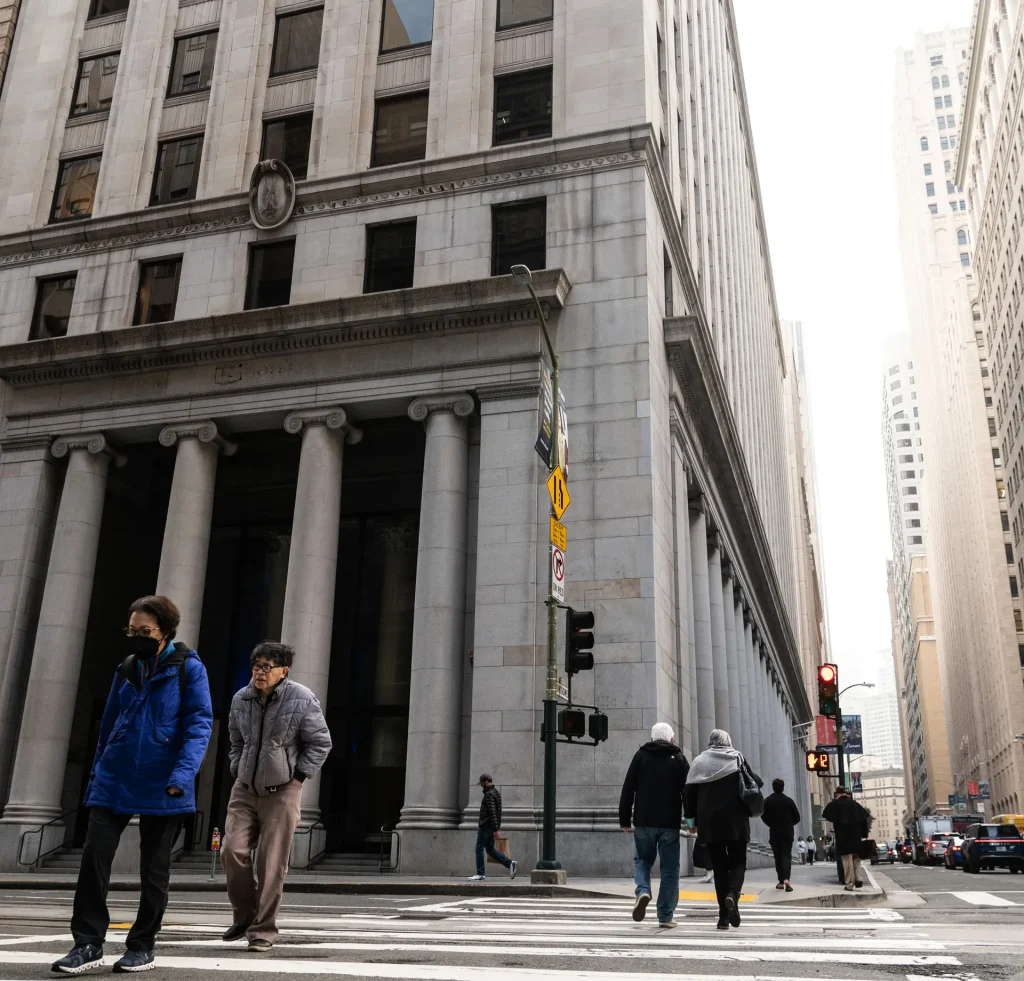
Redco plans to reorient the lobby of 400 Montgomery toward the California Street corridor. | Source: Pablo Unzueta for The Standard
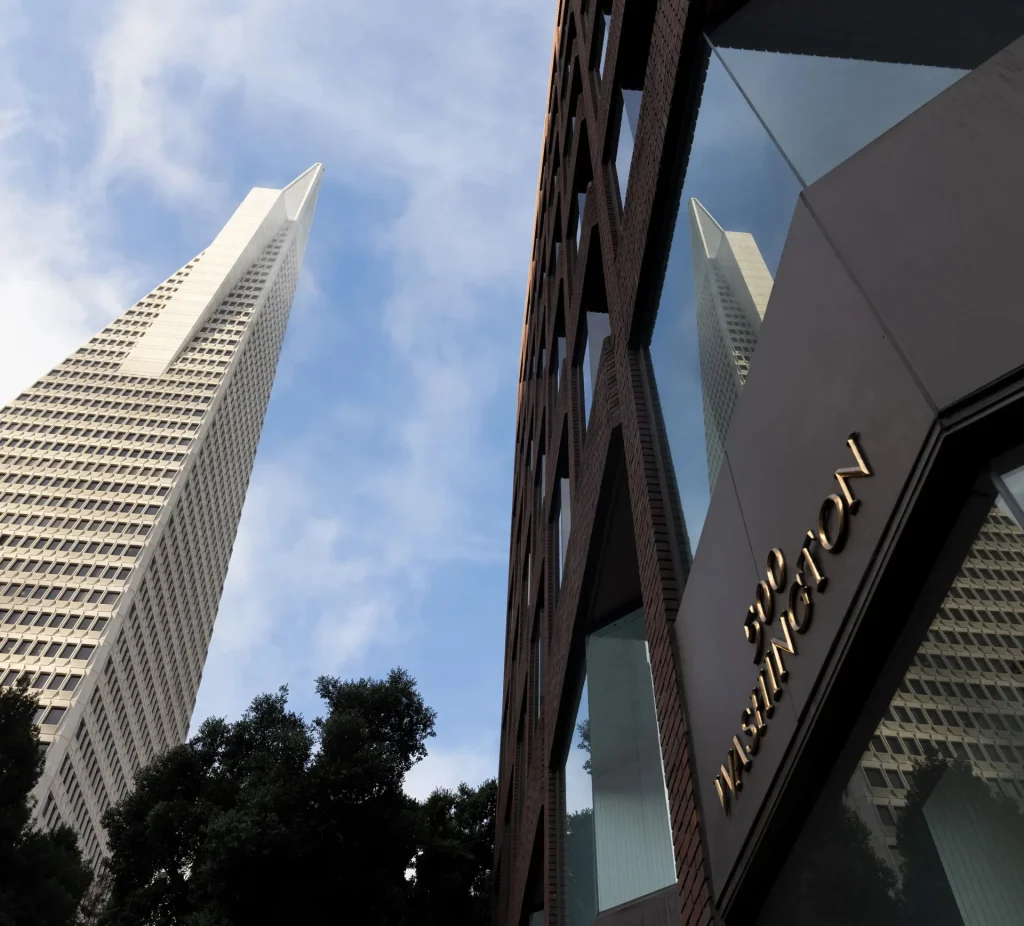
Brick & Timber Collective's newly acquired building at 500 Washington is the firm's largest project in San Francisco. | Source: Benjamin Fanjoy for The Standard
Jesse Feldman, Gilmore’s partner at Brick & Timber, echoed that sentiment. He beams when talking about what the area around 500 Washington could be if it were activated using laser-light projectionssimilar to those at Transamerica Pyramid.
It’s a vision of the future he had to reiterate to investors who otherwise would have just passed over the building as another drab line item on a spreadsheet.
“We have the opportunity right now to implement real changes to our physical environment,” Feldman said. “Forget just updating the tiles. Let’s build a fucking epic bar. San Francisco is about iconic places where you form lifelong memories with friends.”

